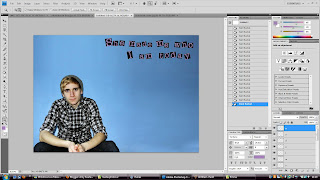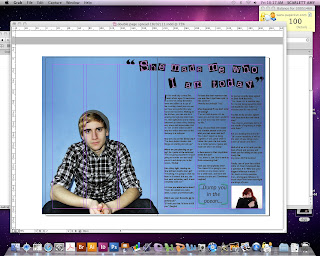SWOT Analysis
These are a few bullet points of what I feel I have learnt from my preliminary task to improve my music magazine (full product).
Strengths
- I have improved my knowledge of using the Macs. When creating my Preliminary Student Magazine task I had never used a Mac before. So hence using them for my Preliminary Task meant that I developed my skills dramatically, and with feeling more confident using the Macs, I feel my full product benefited from this.
- A second strength again is with Photoshop. Although I had previously used to software using it 3 or 4 times a week really pushed my skills and I even felt comfortable using new tools that I had not used in my Preliminary task for my Full Product. An example of this is the magnetic lasso.
- A third strength is that I learnt from my Preliminary Task that I needed to leave and give myself more time to get more photos for my magazine as well as plan what I was going to photography and how. And that is what I did for my Music Magazine, I planned in advance my shoots and took more photos to gain choices from.
- One of my biggest weaknesses was that I had to use a program that I personally have never used before. It was called InDesign. Although made by the same company as Photoshop, I found InDesign hard to use and time consuming.
- Another weakness was my model. After photographing them for my Front Cover they decided that they didn't want their photos taken and used on my Double Page Spread. This caused a problem and at one stage made me behind on my work. However I managed to convince my model to allow me to photograph them again.
- I didn't have a third weakness.
- One opportunity was that i had previous experience with using Photoshop. Therefore I found it easy to edit my photos and images that I was going to use. An example of a tool I knew how to use was the brightness/darkness and curves tool. Under the 'Image' header.
- Another opportunity was I found it easy to set up a composition and the correct composition for the front covers for both the Preliminary and Full Product. I found this easy to do because I had previously studied Photography GCSE and I currently study A Level Photography. This also meant that I knew how to set up the correct settings on the camera.
- A third opportunity was that I had the Internet at all times which meant I could easily find and compare my Preliminary Magazine with a real magazine. I used this to my advantage and this helped me plan my layout with the correct forms and conventions of real media products. This prevented me spending more time with sorting out my layout and meant I could spent more time with improving my graphical skills.
- One threat was that the Mac's kept crashing which was something that wasn't in my control.
- A second threat was that doing my Preliminary Task didn't help me with how to create a conventional Music Magazine as the layout is completely different and the ingredients are also different and not similar.
- A third threat was I have never made a double page spread before and therefore I had no past experience of how to do this.



















































